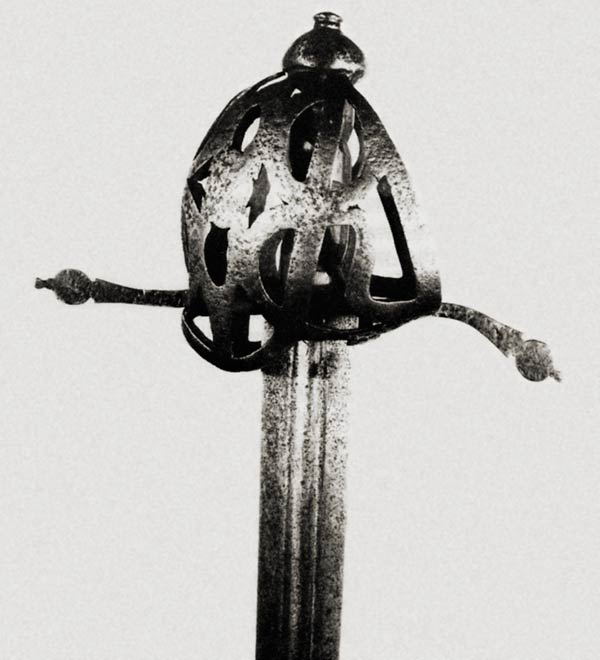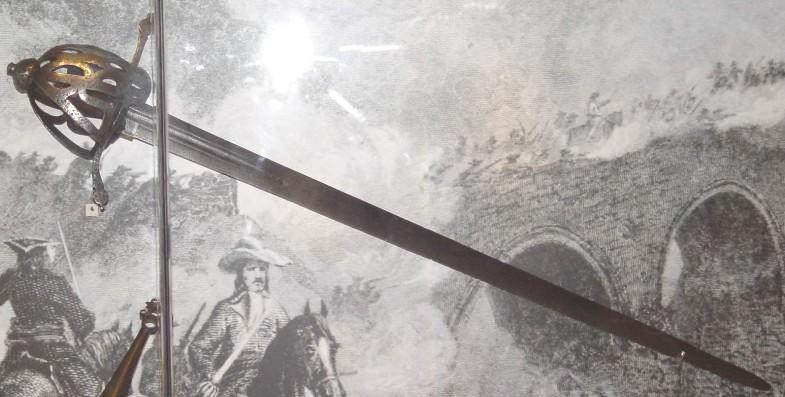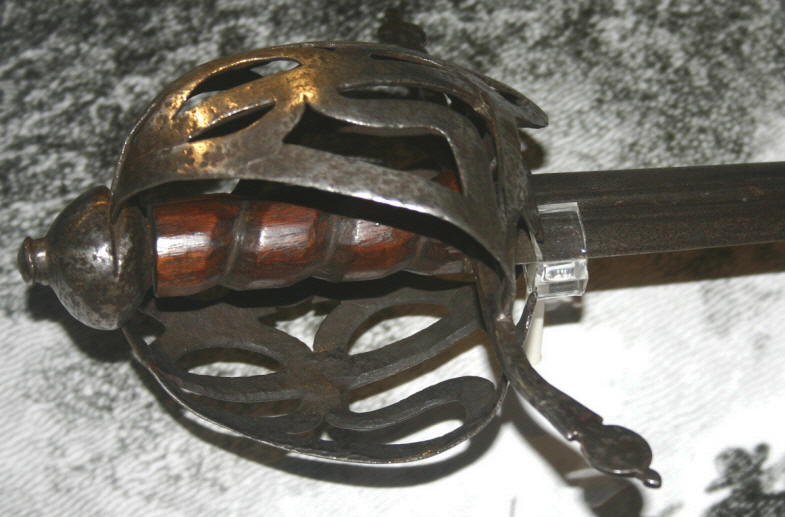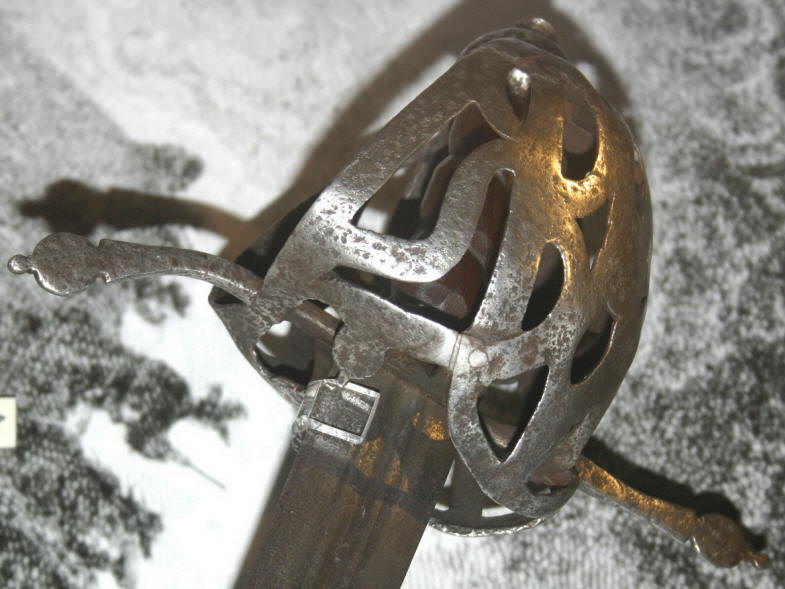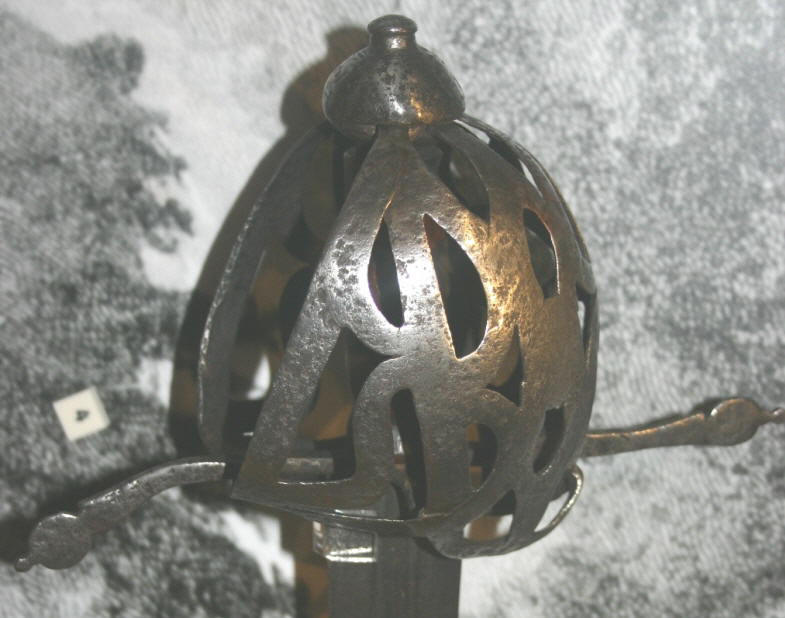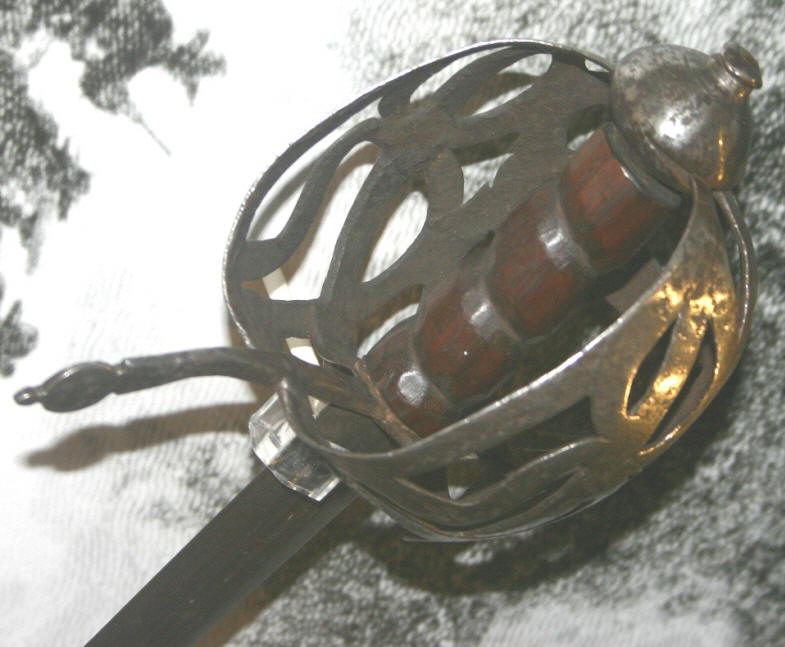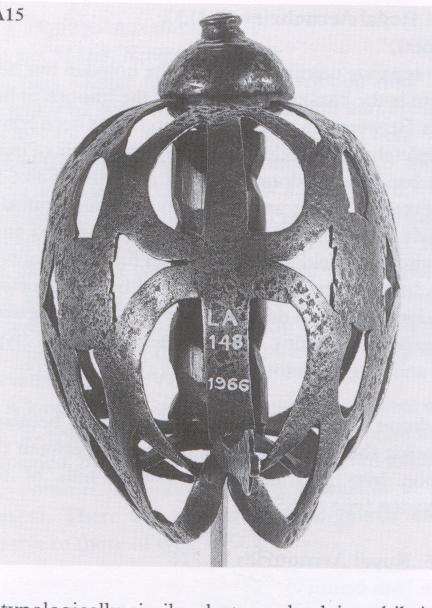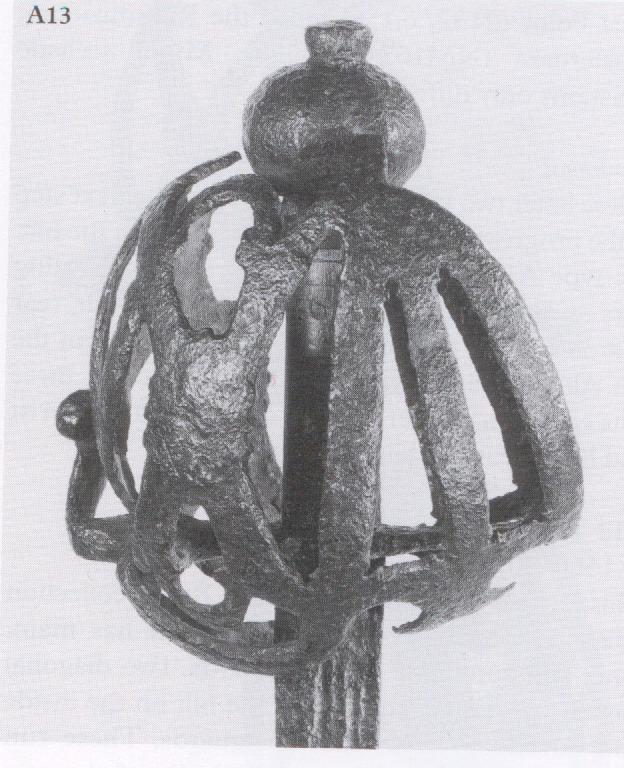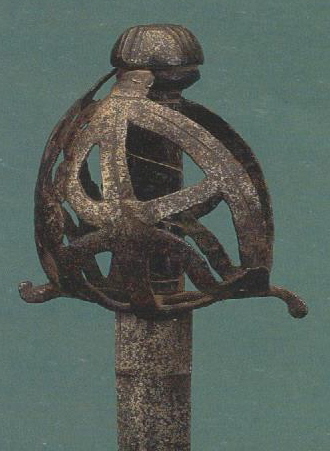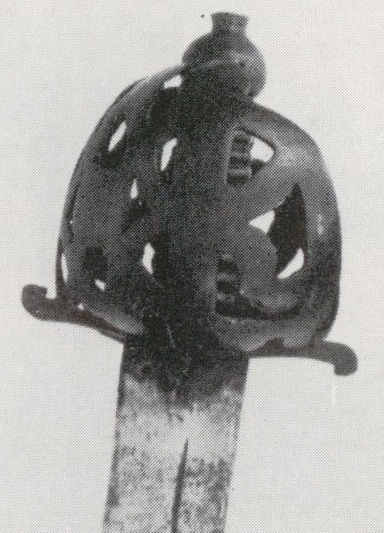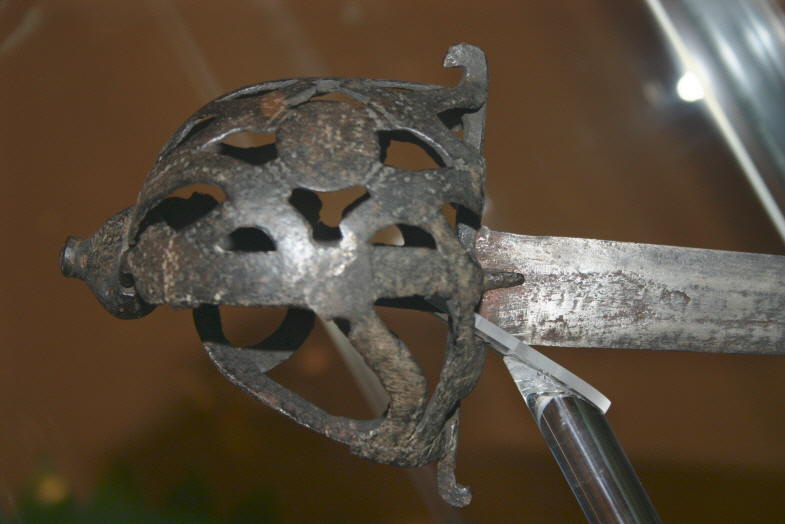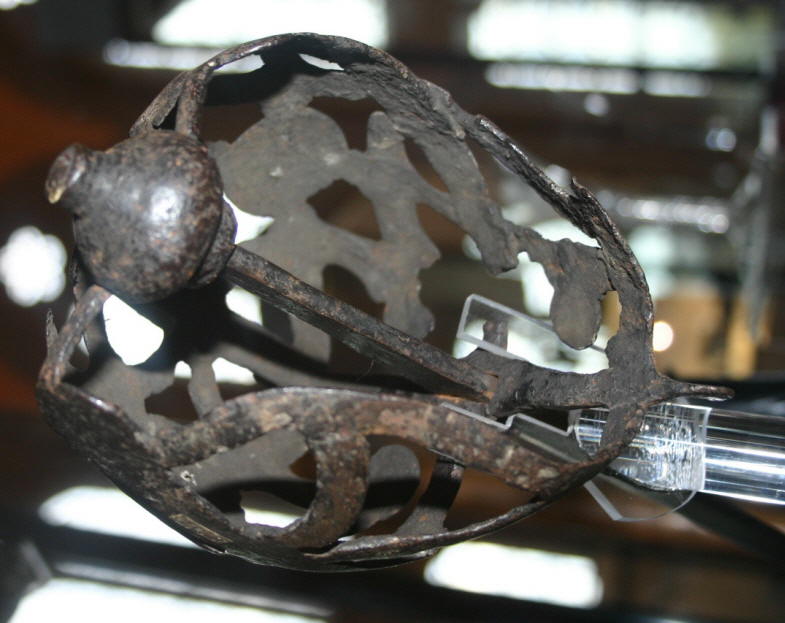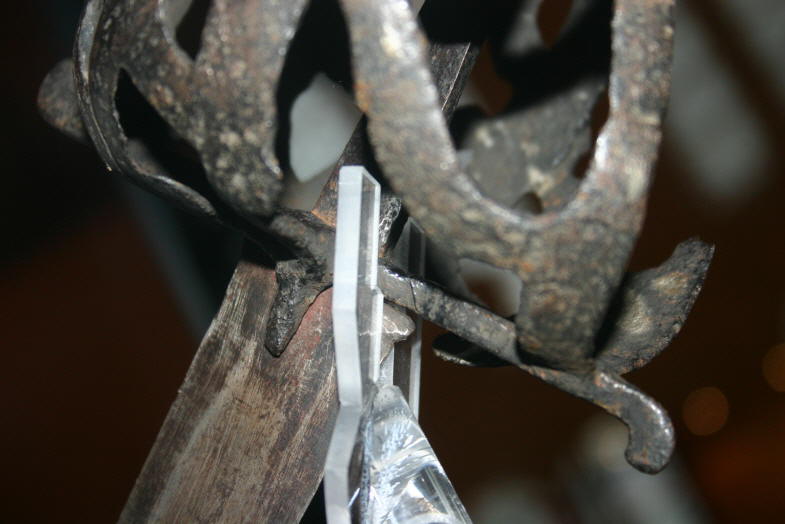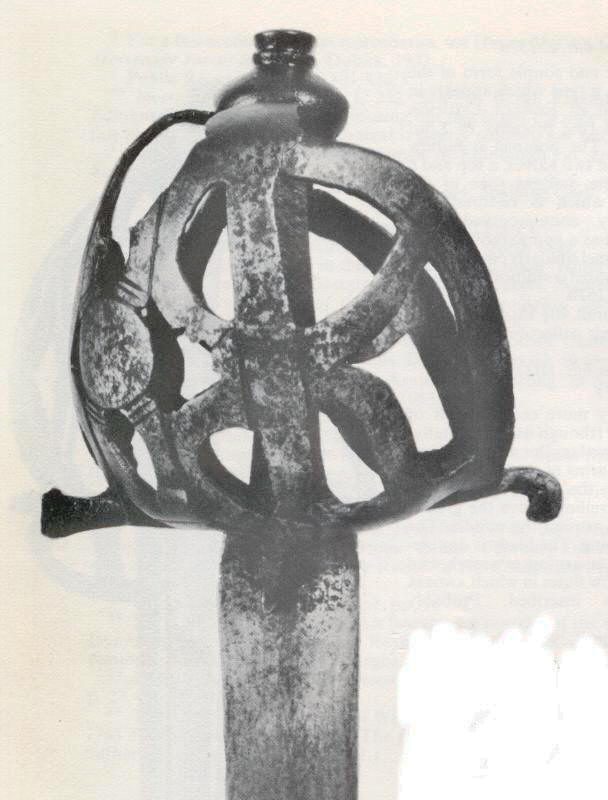"a hilt made in the same style as the "beaknose" hilt of the mid-seventeenth century, from a series of flat ribbon-like bars, which has a pair of long counter-curved quillons... This sword is in the National Museum of Antiquities, Edinburgh."
I was wondering if anyone has seen or has a picture of this sword. I found a beaknose sword in George C. Neumann's "Swords and Blades of the American Revolution" that has very small snouts that look like diminished quillons. I have another picture of what looks like a ribbon hilt (no beak) with large counter curved quillons (I wonder if this is the sword Oakeshott is referring to).
If you have any information on Ribbon hilts with quillons please post.
Thanks
ks
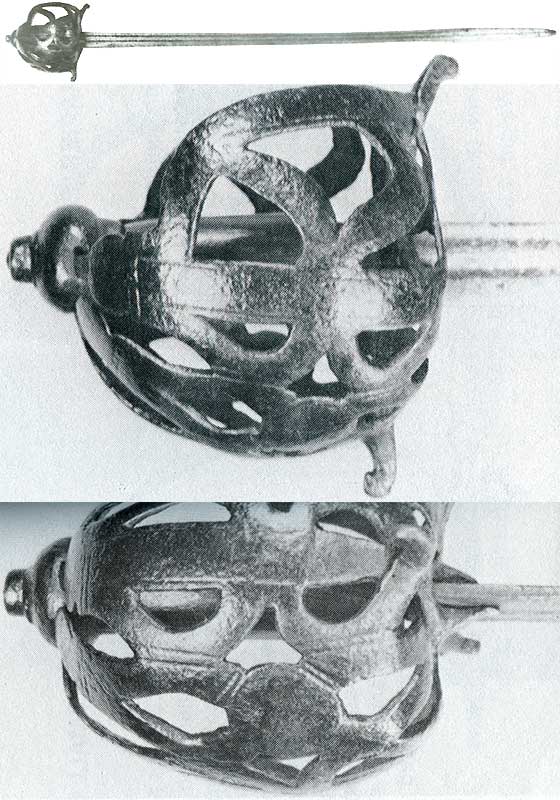
From Neumann's "Swords and Blades of the American Revolution" Overall length 96cm, blade length 83, blade width 27mm, weight 907grams
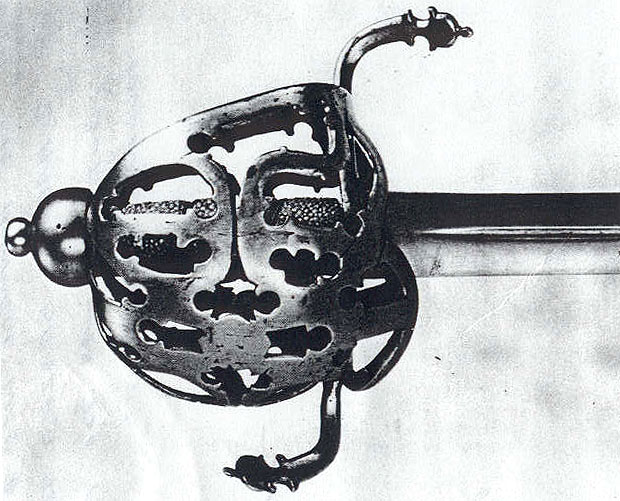
Early Scottish Baskethilt with Quillons
